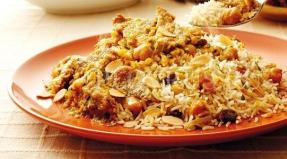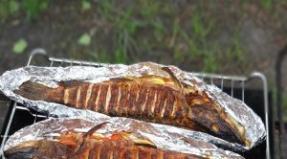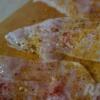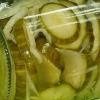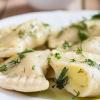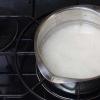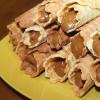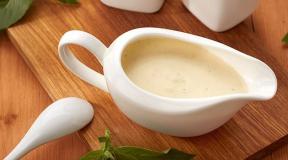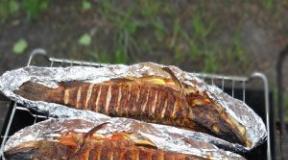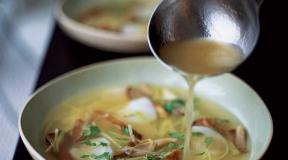Honey apricots for the winter. Honey jam - double the benefits of your favorite delicacy (culinary recipe with honey) Features of growing this variety
The apricot in the gardens of the middle zone or Siberia has not been surprising for a long time. This southern tree began to move north with the appearance of new winter-hardy varieties, of which there are now many. Among them is the Honey variety, which, oddly enough, is not included in the State Register of Breeding Achievements of the Russian Federation, although it has long been described and is well known and loved by many gardeners.
History of the Honey variety
Apricot Honey appeared at the end of the last century in the Urals. The variety was created by Chelyabinsk scientist K.K. Mullayanov while working with the famous Kichiginsky variety. By working on open pollination of the latter, a researcher at the Research Institute of Horticulture and Potato Growing was able to obtain a new variety with very useful properties, one of which is increased frost resistance. All experiments took more than five years, and in 1996 K. K. Mullayanov announced the creation of the Honey variety.
Appearance and varietal characteristics of Honey
Honey apricot grows in the form of a tree of medium height (about 4 meters), the diameter of the crown is approximately the same size. The crown is characterized by high spreading. The branches are colored gray-brown, the leaves are of normal shape and color. A distinctive feature of the variety is the presence of cracks in the bark of mature trees, directed along the trunk. Wood can withstand severe frosts: long-term temperature drops to -30 o C and short-term drops to -40 o C. Disease resistance is above average.
The Honey variety cannot be called high-yielding
The fruits of the Honey apricot are relatively small, have an average weight of about 15 g. The skin is of medium thickness, slightly pubescent, colored bright yellow. The integumentary blush is most often absent. A small number of red subcutaneous dots are noticeable in the upper part of the fetus. The stone is of normal size and is completely separated from the pulp. The pulp is medium dense, yellow, the juice content is not very high. The taste of apricots is sweet, there is no bitterness, the aroma is strong.
Tasters rate the taste at 4.3 points out of five.
The fruits ripen in the middle period: in the center of Russia this occurs at the end of July or beginning of August. Four-year-old trees bear the first fruits; the next year the yield is already noticeable. However, it cannot be called high: about 20 kg of apricots are collected annually from an adult tree, and even less in the absence of a suitable pollinator with simultaneous flowering. The fruits are consumed both fresh and for various preparations: jam, compotes, drying. Unripe apricots withstand transportation well and are stored for a long time.
Honey fruits are not very large, but this is normal for northern varieties
The main advantages of the variety are:
- precociousness;
- annual fruiting;
- very high frost resistance;
- safety and transportability of the crop;
- versatility of use.
Among the disadvantages, gardeners note:
- low yield;
- poor self-pollination (the variety from which Honey came, Kichiginsky, is best suited as a pollinator);
- relatively small fruits.
Video: apricots for Siberia
Features of growing this variety
In general, the Honey variety is considered unpretentious; it does not require the creation of any special conditions for growth, and is capable of bearing fruit in almost any climate. But the crop itself is not very easy to grow, therefore, both during planting and subsequent care, the basic requirements for agricultural technology must be strictly met.
Description of landing
Like any other apricot varieties, they try to plant Honey in open areas well lit by the sun. At the same time, trees must be protected from cold winds, so it is good if there is a high fence or wall of ornamental bushes on the north side. However, completely windless places are not optimal: when the air stagnates, the risk of diseases increases and a suitable atmosphere is created for pests. Low areas where rainwater and cold air accumulate are also undesirable.
The composition of the soil for Honey apricot is not very important: only heavy clay and poor sandy soils are undesirable. Even rocky soil is quite suitable, but it must be well fertilized. Acidic soils are subjected to liming in advance. If groundwater comes closer than one and a half meters to the surface of the earth, artificial mounds up to half a meter high are built for planting.
Planting on a mound prevents roots from drying out in the event of winter thaws.
Planting is possible both in autumn and spring: the choice is made based on the climatic characteristics of the region. So, in the middle zone and other relatively cold regions, Honey should be planted in the spring, before the buds begin to open, but at positive air temperatures. The pit for spring planting is prepared in the fall. In the southern regions, autumn planting is more convenient, but this should be done only after the end of leaf fall. This could be October or even November, depending on the current weather.
The hole for the Honey apricot should have dimensions of about 70 x 70 x 70 cm. It is prepared in the usual way: the bottom layer is thrown away, and the top layer, mixed with fertilizers, is returned, having previously been placed on a drainage layer of 10–12 cm of pebbles or crushed stone. As fertilizers, take 3-4 buckets of humus and about 50 g of complex mineral fertilizer. You can pour a lot of ash, at least three liters.
Important! The best Honey apricot seedlings are considered to be two-year-olds; One-year-olds also take root well, three-year-olds - worse.
It is advisable to dip the roots in a clay mash before planting, or at least soak them in water for several hours. If you plant an apricot in a hole, remove the required amount of soil from it and proceed in the usual way: place the seedling so that the root collar is 2-3 cm above the ground. If you need to plant it on a hill, the seedling is placed directly on the hole, and then the roots are covered, forming a mound. In any case, a stake is first driven in to tie the tree.
After planting the seedling and tying it up with a figure eight, water it well. A one-year-old seedling is immediately shortened by a third; a two-year-old seedling is left with only two lateral branches, well located, and shortened by 1/2.
Video: planting apricots in the middle zone
Tree care
In the first year, Honey Apricot is watered frequently, not allowing the soil to dry out, then only in dry weather. In August, in any case, watering is stopped. The tree trunk circle is kept clean and the soil is periodically loosened. If planting on a mound, it is more convenient to sow lawn grass on it. The first flowers that appear are almost completely torn off: Honey is allowed to gain strength, and fruiting is postponed for another year. Two years after planting, they begin to feed. In the first years, it is advisable to limit yourself to mullein, then you can use mineral fertilizers: in the spring with an emphasis on nitrogen, in the fall - on phosphorus and potassium.
Honey apricot tolerates drought worst of all at the beginning of flowering, immediately after it and during the period of intensive fruit growth. If you can skip watering the rest of the time, then the lack of moisture during these periods threatens to reduce the quantity and quality of fruits. In case of dry autumn, pre-winter watering is also necessary.
The crown of Honey is prone to thickening, so pruning is carried out annually. As a rule, the tree is formed according to a sparsely tiered pattern, which takes 3–4 years, then pruning is of a sanitary and thinning nature.
The crown must be blown out to prevent pathogenic organisms from appearing
This apricot does not require special preparation for winter: in the case of mature trees, only the trunk circle is insulated by pouring a 10–15 cm layer of mulch. For the first 1–2 years, the seedling is insulated by wrapping the trunk with spunbond, cardboard or spruce branches.
Among all the twists that can be closed for the winter, I really love fruits that are closed in whole halves. This way they will be more convenient to eat, and their taste will remain natural and almost like fresh. Apricot halves for the winter, the photo recipe of which I am publishing for you, are slightly different from the usual ones that we prepared last time, as they have a pleasant, more aromatic aroma. Sugar does not add such flavor to fruits, but only makes sour fruits sweeter. Children love fruit preparations, so keep in mind that they will be the first to want to open such a beautiful jar of apricots. And for the kids I want to get twice as many of these goodies, because it’s impossible to refuse them.
Products you need:
- apricots – 600 g.,
- honey – 150 g.,
- water – 200 ml.
I divide the apricots into halves, removing the pits. 
I put the apricot halves in jars. 
I pour honey over them to make the apricots sweeter and more aromatic. 

And then I fill the apricots in jars. 
I set the jars to sterilize for 15 minutes, since the jars are small and this time will be enough for them. For 0.5 liter jars, 15 minutes is enough, but for 1 liter jars, take 20-25 minutes. 
I close the jars with tight lids. 
You can also turn them upside down to check if everything is screwed in tightly. Then I cover it with a blanket and leave it overnight to cool completely. Then I open the whole thing and put it in a pantry for storage, which is specially equipped for canned foods.
Typically, such a storage room should be dark and located in a place where the sun's rays do not reach. I place the jars on the shelves and when the time comes, I open them and use them in their pure form, or I can use honey apricots for filling cakes, pies, or cook natural homemade jelly from them. Everything cooked at home always tastes a thousand times better! I recommend it, very tasty
I know that many housewives like to seal berries without cooking: raspberries, strawberries, blueberries are ground with sugar and sent to the refrigerator, without any heat treatment. Apricots can be closed using the same principle. True, it is better to get rid of their skins, so the recipe for apricots without cooking is somewhat more labor-intensive, but still it cannot be called complex and time-consuming.
New recipe with apricots
Last year I was advised to prepare apricots this way not with sugar, but with honey. I tried to make a small jar of this blank and was very pleased with the result. The preparation is stored well in the refrigerator, and the apricots turn out very bright, tasty, and look appetizing.
How does it taste?
These apricots with honey can be used as an addition to porridges, casseroles, pancakes and cheesecakes, especially for children. In addition, they can serve as an excellent sauce for ice cream, mousses, cheesecakes... This year I plan to prepare more of these apricots with honey. Are you with me?

Required Ingredients
- 1 kg apricot;
- 600 g honey.
Cooking step by step
The weight of pitted apricots is indicated. This amount yields approximately 1 liter of preserved food. The amount of preservation obtained is quite approximate, since it depends on the thoroughness of grinding the apricot into puree. For this type of preservation, we choose soft, large, ripe apricots. If the apricots are dense, it will be difficult to grind them through a sieve. Wash the apricots in plenty of water and lightly dry.

For canning, we take fresh honey, still liquid. If you use last year's hardened honey, it will be impossible to thoroughly mix it with apricot puree. As a result, the mass will turn out to be heterogeneous.

Using a sharp knife, cut the apricots along the groove and remove the pits.

Mash the apricots with a potato masher and then grind through a sieve or mesh colander.

A delicate puree-like mass is formed. We weigh the resulting puree. If the apricots are soft enough and you have pureed them well, you should end up with approximately 600-700g of puree.

Add the same amount of honey (by weight) to the apricot puree and mix thoroughly.
